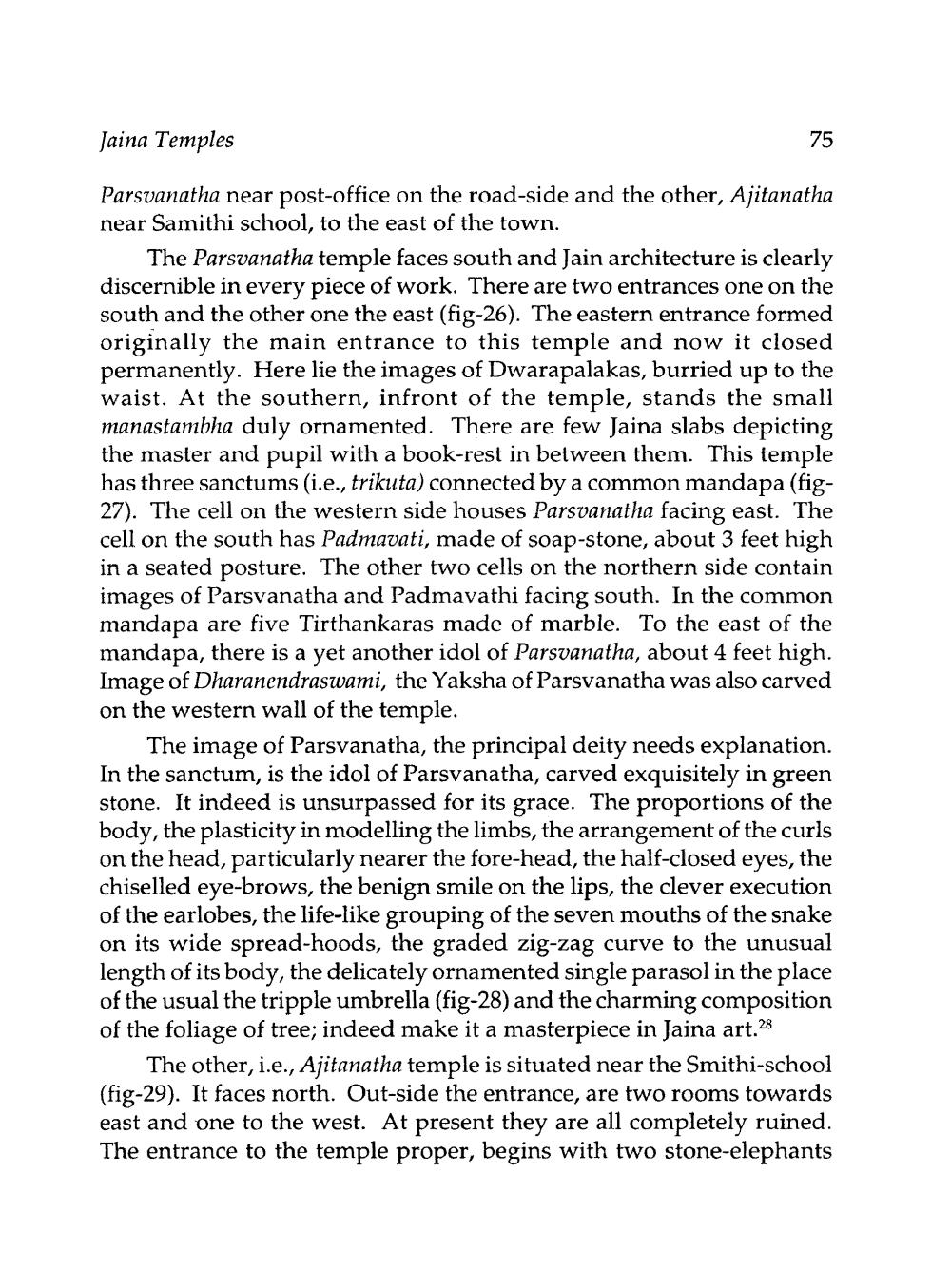________________
Jaina Temples
75
Parsvanatha near post-office on the road-side and the other, Ajitanatha near Samithi school, to the east of the town.
The Parsvanatha temple faces south and Jain architecture is clearly discernible in every piece of work. There are two entrances one on the south and the other one the east (fig-26). The eastern entrance formed originally the main entrance to this temple and now it clos permanently. Here lie the images of Dwarapalakas, burried up to the waist. At the southern, infront of the temple, stands the small manastambha duly ornamented. There are few Jaina slabs depicting the master and pupil with a book-rest in between them. This temple has three sanctums (i.e., trikuta) connected by a common mandapa (fig27). The cell on the western side houses Parsvanatha facing east. The cell on the south has Padmavati, made of soap-stone, about 3 feet high in a seated posture. The other two cells on the northern side contain images of Parsvanatha and Padmavathi facing south. In the common mandapa are five Tirthankaras made of marble. To the east of the mandapa, there is a yet another idol of Parsvanatha, about 4 feet high. Image of Dharanendraswami, the Yaksha of Parsvanatha was also carved on the western wall of the temple.
The image of Parsvanatha, the principal deity needs explanation. In the sanctum, is the idol of Parsvanatha, carved exquisitely in green stone. It indeed is unsurpassed for its grace. The proportions of the body, the plasticity in modelling the limbs, the arrangement of the curls on the head, particularly nearer the fore-head, the half-closed eyes, the chiselled eye-brows, the benign smile on the lips, the clever execution of the earlobes, the life-like grouping of the seven mouths of the snake on its wide spread-hoods, the graded zig-zag curve to the unusual length of its body, the delicately ornamented single parasol in the place of the usual the tripple umbrella (fig-28) and the charming composition of the foliage of tree; indeed make it a masterpiece in Jaina art. 28
The other, i.e., Ajitanatha temple is situated near the Smithi-school (fig-29). It faces north. Out-side the entrance, are two rooms towards east and one to the west. At present they are all completely ruined. The entrance to the temple proper, begins with two stone-elephants




